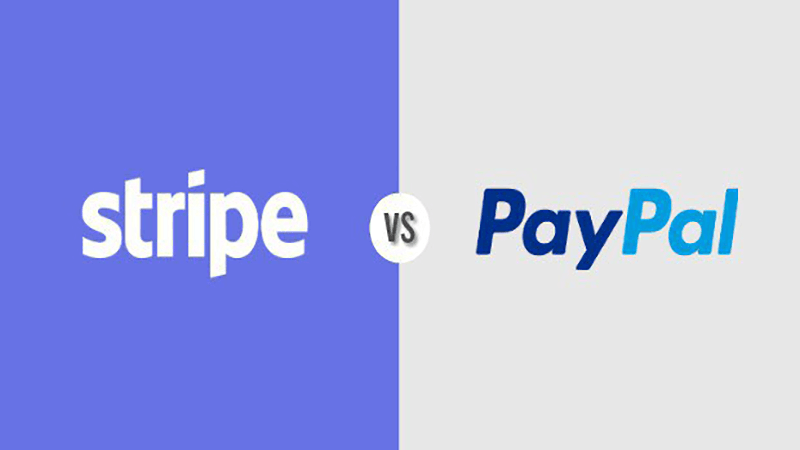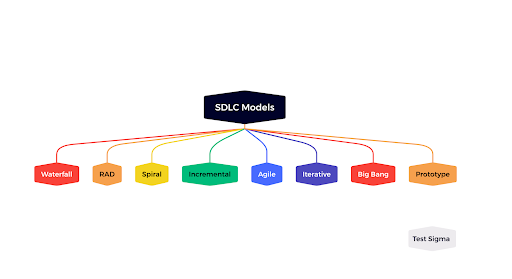
When someone is beginning a new online store for the first time his route is filled with a lot of problems. As the e-commerce world has developed by leaps and bounds in the last decade or so, there are just way too many related products and services available.
For example, Magento and WooCommerce are both very popular CMS for e-commerce and both have their pros and cons. Once you decide between Magento and WooCommerce development after a lot of learning and understanding, the next important factor is the payment method.
But just like all other things that you’d like to have for your e-commerce website, there are many choices when it comes to payment gateways too. PayPal and Stripe are currently two of the most popular payment processors for online stores. While PayPal has been working for a long time, Stripe has earned a lot of attention in the past few years.
If you are thinking to start a new online store or already have one but are fighting between PayPal and Stripe, this post can help you to decide between them. Both the reputed payment gateways will be compared based on several major factors to allow store owners to pick one that best suits their requirements.
Let us first get a basic idea about what PayPal and Stripe are-
PayPal
Established in 1998 by the likes of Peter Thiel, Elon Musk, and others, PayPal can be described as a payment solution that can be used for making and receiving online payments. It claims to have more than 250 million customers all over the world and is accepted in 200+ markets by over 20 million merchants.
Anyone and everyone who receives or sends money online now mostly have a PayPal account. This has made it one of the most famous names in the e-commerce industry and some eCommerce website developers also recommend the same to the clients.
Stripe
Headquartered in California, USA, Stripe is also an online payment solution. It was founded in 2010 and is now more popular than many of the other famous payment gateways used by e-commerce stores. A major reason for the increasing popularity of Stripe is the customizable development tools it gives.
Due to this, online stores that have an in-house team of programmers and code-savvy store owners favor using Stripe over other payment processors. From smallest of businesses to world-renowned companies such as Lyft and Pinterest now use Stripe for receiving payments.
PayPal vs. Stripe
Now you have a basic idea about both these payment gateways, let us quickly compare them to help you pick the best for your online store.
-
Fees of Transaction and Service
One of the most significant reasons why PayPal and Stripe have been capable to stay ahead of others in the payment gateway market is due to their clear pricing. Both the payment processors charge a flat rate of 2.9% + $0.30 for every successful transaction.
They have chosen the “pay-as-you-go” pricing model which indicates that you are not expected to pay any monthly fees and the charges are only applicable to successful transactions. So, for a $100 sale, you will be paying $3.20 irrespective of whether you use Stripe or PayPal.
But while the base fee is the same, PayPal has some additional service charges. For example, PayPal charges a 1% fee on international cards while Stripe offers it for free. Furthermore, there is a fee for recurring billing, authorizing the card and advanced fraud security with PayPal. Stripe gives all these services for free.
Some other cost-related features of both the payment gateways are as follows-
- Micropayments- For transactions less than $10, PayPal charges at a flat rate of 5% + $0.05. Stripe, on the other hand, charges the same base rate for micropayments as well. This makes PayPal a more suitable option for micropayments.
- Chargebacks/Refunds- Chargebacks are when customers contact the card provider for canceling a transaction. For every chargeback or refund, PayPal charges a flat fee of $20 while Stripe charges a fee of $15.
- If the customer gets a refund, Stripe will not refund the processing or service fee. PayPal also will not return the percentage fee but will refund the fixed fee.
- Receiving Payment- While all of this is fine, when will you get paid? When a customer purchases on your website, the payment gateway you have gets the payment from the customer and then pays the same to you after deducting the fees.
- Paypal usually clears the payment within a single business day. In the USA and Australia, Stripe has 2-day rolling transfers and 7-day rolling transfers in other countries.
-
Currency Support and Availability
Apart from affordability, you also need to make sure that the payment processor you select is accessible in the most number of countries and supports many currencies. You should review all the options with your Magento 2 development agency for creating an international e-commerce website.
As discussed in the beginning, PayPal is available in more than 200 countries and it supports around 26 currencies. On the other hand, Stripe is an honestly new company when compared to PayPal and is currently only accessible in around 25 countries. But it is important to note that Stripe holds more than 130 currencies.
Moreover, even if you have your business placed somewhere where Stripe is not available; it offers Stripe Atlas service with the help of which you can easily set up a US bank account for your business. This will enable you to use Stripe even from a country where Stripe is currently not available.
But as PayPal is readily available in 200+ countries and supports major currencies, it has a small edge over Stripe in this department.
-
Security
It is also very crucial for the payment gateway to be secure. Even a single customer experiencing any kind of security warning while making a payment on your website could destroy your reputation. PayPal and Stripe lay major importance on security and have made the gateways highly secure and stable.
However, the introduction of Stripe.js provides Stripe an edge over PayPal. When you select Magento 2 developers, they can install Stripe.js on the website. With this, all the sensitive customer data like credit card information will not be sent to your website server. Stripe will immediately receive all the data so that you are not required to manage any kind of sensitive customer information.
Even PayPal now allows the storage of sensitive data in a safe vault with OAuth 2.0. However, its performance is as such that the data passes to the vault from your server. If at all your servers are compromised during data movement, there are chances that sensitive credit card information of the customers can be stolen.
So, while both the payment gateways offer top-notch security, Stripe supports better security intrinsically with Stripe.js.
-
Customer Support
If you are running an online business, you should be able to immediately get in touch with the support team of your payment gateway as and when needed. A significant reason why Stripe was losing customers to other payment gateways was their irresponsible support. However, this was a matter of the past.
There are now many ways to get in touch with the support team of Stripe. There is 24×7 support by live chat and phone, along with an online help center, email support, and social media. But even though the support has advanced significantly, many customers continue to suffer and their reviews vary from good, satisfactory to poor.
To completely meet the needs of the customers, Stripe has also recently started Premium Support which comes at a small fee.
Sadly, even PayPal support is not really up to the mark with regards to support which is unusual as it is already an established brand for several years now. It has an online community forum, help center, email support, phone, live chat, and social media. However, a lot of customers have stated that it is often very challenging to get in touch with a PayPal support executive.
-
Comfort of Use
Last but not least is the ease of use. With Stripe, the checkout method for customers is super simple. A customer simply needs to enter their credit card number and click the submit button to reach your follow up or thank you page. You are in full control of the flow and design.
However, if you want to use advanced features of Stripe like its “Pay with Card” button, things can get a little difficult if you are from a non-technical background. But as long as you’d be hiring a reputed eCommerce development partner, there shouldn’t be any trouble for you or your customers.
While using PayPal is simple too, there can be a few further steps based on how you set your gateway and the types of payments you accept. There are also other combinations and solutions which can allow you to offer credit card payment straight from your website with PayPal.
But if the studies based on online customer behavior are to be considered, the smallest delay in the payment process could impact your bottom line. So, if you do select PayPal, make sure that you use the additional integrations and solutions available to speed up the checkout process.
Conclusion
Now that you know where both these famous payment gateways stand with regards to factors that are most important for online stores, it shouldn’t be hard for you to select one. Recognize the requirements of your website and that of your customers to select a payment gateway that better meets the requirements.



